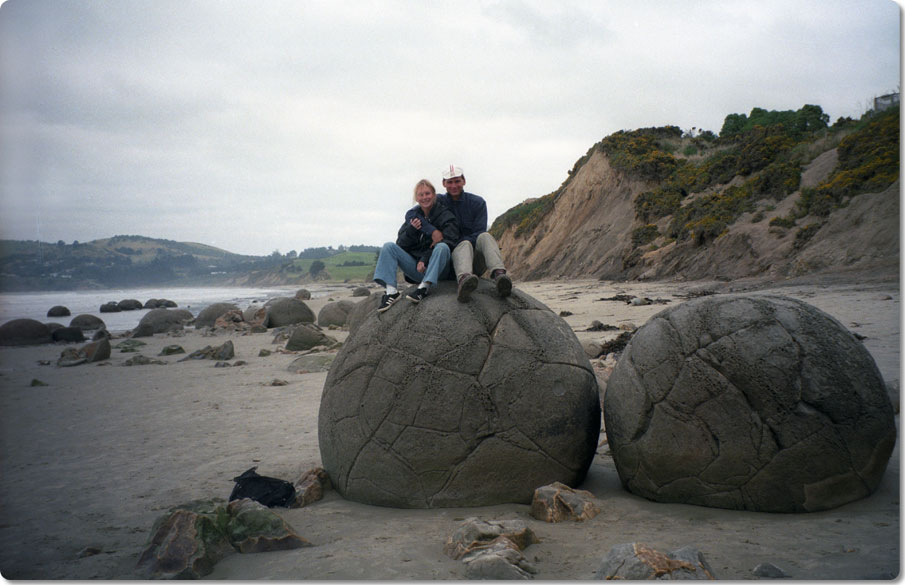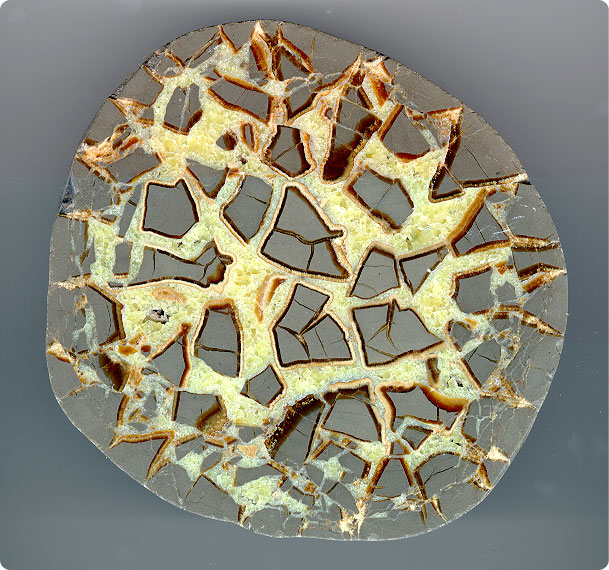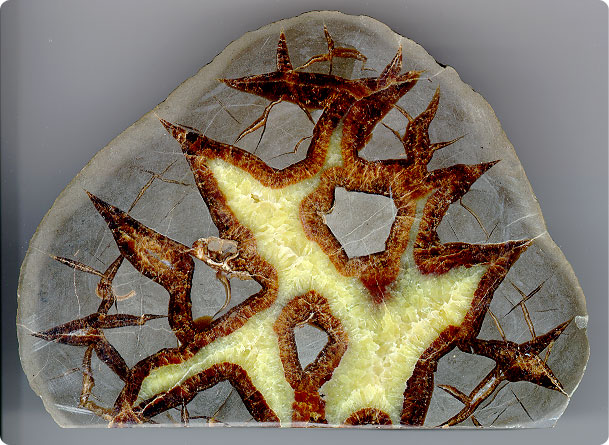
Of all the pictures with Valerie,
this is my favorite. Actually, it's probably one of the favorites from
the whole trip. I was content to go where she wanted to go as I had
more time in NZ, but the one area that I said we had to go to was the
boulders. She was enthusiastic about seeing them too, so that's where
we went. We were expecting them to be big, but not quite this big. The
Maoris say that the Moeraki boulders are food baskets from the canoes
of the gods that washed ashore. However they got there, they're pretty
neat.
Look at the debris in front of the boulders. Notice the
similarity of these pieces to the center of the rocks below.
Read on for more infor about these rocks.


These are a septarian nodules that I found when I was in Utah. It's the
same rock as a moeraki boulder. I met a hotel owner who said he would
bring me up to the mine the next day. He took me up there by truck and
dropped me off. The people working at the mine showed me around and
told me that whatever I could find, I could keep. I found a few nodules
and rode my bike down the mountain. I had about 12 kilos of nodules in
my backpack and everytime I hit a bump, the nodules would bounce and
feel like it cracked a vertebrae. I guess it's a good thing that we
have so many of vertebra.
The nodules that were cut open and polished look like above. This is
very typical for a septarian nodule. I think
they are among the more beautiful rocks in the world. These nodules are
approximately 15 cm across. The nodules form as mudballs made out of
bentonite (the grey portion of the rock). The bentonite cracks and
other minerals seep into the cracks and crystallize. The yellow
portions are calcite and the two minerals bordering the bentonite are
aragonite and barite.
Some of the moeraki boulders had cracked open and
they looked almost exactly like this in the middle, though the colors
weren't quite as bright as this. Since the moeraki boulders are much
bigger, it was common that one of the inclusions at the center of a
boulder to be three times as big as this entire septarian nodule.


